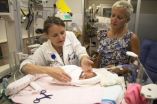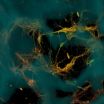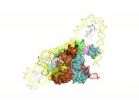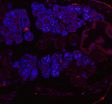(Press-News.org) West Orange, NJ. August 11, 2014. Kessler Foundation researchers have identified an association between the built environment and disability-related outcomes for adults with physical impairments. The article, Disability and the built environment: an investigation of community and neighborhood land uses and participation for physically impaired adults, was published in the July issue of Annals of Epidemiology (doi: 10.1016/j.annepidem.2014.05.003). The authors are Amanda Botticello, PhD, MPH, and Nicole Cobbold, BS, of Kessler Foundation, and Tanya Rohrbach, MS, of Raritan Valley Community College, Branchburg, NJ.
Investigators explored the associations between community and neighborhood land uses and community participation using cross-sectional data from 508 community-living adults with acquired chronic disabilities in New Jersey. These data were obtained from the national Spinal Cord Injury Model Systems database. "Studies show that neighborhood characteristics such as poor street conditions, homogeneous land use, traffic, and ambient hazards are largely predictive of more reported health problems, functional limitations, inactivity, and social isolation among older adults. The objective was to look at the impact of the built environment (or the physical features of geographic areas) on the members of the disabled population who are not generally visible in population-based studies, such as persons with chronic spinal cord injury. This line of research may help delineate factors that affect how well a person with an acquired physical disability adjusts to living in the community," said Dr. Botticello, a research scientist in Outcomes & Assessment Research at Kessler Foundation. Dr. Botticello is a co-investigator in the Northern New Jersey SCI System, and an assistant professor at Rutgers-New Jersey Medical School.
Participants' residential addresses were geocoded, enabling individual survey data to be linked with Geographic Information Systems data on land use and destinations. Results showed that living in communities with greater land use mix and more destinations was associated with a decreased likelihood of reporting optimal social and physical participation. Living in neighborhoods with large portions of open space, however, was positively associated with the reporting of full physical, occupational, and social participation.
"Overall our analysis suggested that the living conditions or natural aspects of the local community may be relevant to well-being for persons with physical disabilities living in densely populated regions like New Jersey," noted Dr. Botticello. "These findings focus attention on the environment as an important factor to be considered in disability-related outcomes. They are relevant to those who seek to improve the outlook for community participation, including outcomes researchers, policymakers, and professionals who care for people with disabilities."
INFORMATION:
This research is supported by funding from the Eunice Kennedy Shriver National Institute of Child Health and Development (4R00HD065957-03) and National Institute for Disability and Rehabilitation Research (H133N110020).
About Kessler Foundation
Kessler Foundation, a major nonprofit organization in the field of disability, is a global leader in rehabilitation research that seeks to improve cognition, mobility and long-term outcomes, including employment, for people with neurological disabilities caused by diseases and injuries of the brain and spinal cord. Kessler Foundation leads the nation in funding innovative programs that expand opportunities for employment for people with disabilities. For more information, visit KesslerFoundation.org.
facebook.com/KesslerFoundation
On Twitter @KesslerFdn
Carolann Murphy, PA; 973.324.8382; CMurphy@KesslerFoundation.org
Lauren Scrivo, 973.324.8384/973.768.6583 (cell); LScrivo@KesslerFoundation.org
Kessler Foundation scientists link environment & inclusion in adults with disabilities
Research may help delineate factors that affect how well a person with an acquired physical disability adjusts to living in the community
2014-08-11
ELSE PRESS RELEASES FROM THIS DATE:
A global temperature conundrum: Cooling or warming climate?
2014-08-11
MADISON, Wis. — When the Intergovernmental Panel on Climate Change recently requested a figure for its annual report, to show global temperature trends over the last 10,000 years, the University of Wisconsin-Madison's Zhengyu Liu knew that was going to be a problem.
"We have been building models and there are now robust contradictions," says Liu, a professor in the UW-Madison Center for Climatic Research. "Data from observation says global cooling. The physical model says it has to be warming."
Writing in the journal Proceedings of the National Academy of Sciences today, ...
Follow the radio waves to exomoons, UT Arlington physicists say
2014-08-11
Scientists hunting for life beyond Earth have discovered more than 1,800 planets outside our solar system, or exoplanets, in recent years, but so far, no one has been able to confirm an exomoon. Now, physicists from The University of Texas at Arlington believe following a trail of radio wave emissions may lead them to that discovery.
Their recent findings, published in the Aug. 10 issue of The Astrophysical Journal, describe radio wave emissions that result from the interaction between Jupiter's magnetic field and its moon Io. They suggest using detailed calculations about ...
Digoxin tied to increased risk of death in patients with atrial fibrillation
2014-08-11
In An Account of the Foxglove and Some of its Medical Uses, published in 1785, Sir William Withering cautioned readers that extracts from the plant foxglove, also called digitalis, was not a perfect drug. "Time will fix the real value upon this discovery," he wrote.
Now, more than 200 years later, researchers at the Stanford University School of Medicine have validated Withering's warning with the discovery that patients with atrial fibrillation — a rapid and irregular heart rhythm — who are treated with the digitalis-derivative digoxin are more likely to die than similar ...
Bioengineers make functional 3-D brain-like tissue model
2014-08-11
MEDFORD/SOMERVILLE, Mass. (August 11, 2014) --The human brain remains one of the least understood organs in the human body, because of its complexity and the difficulty of studying its physiology in the living body. Tufts University researchers today announced development of the first reported complex three-dimensional model made of brain-like cortical tissue that exhibits biochemical and electrophysiological responses and can function in the laboratory for months. The engineered tissue model offers new options for studying brain function, disease and trauma, and treatment. ...
Trapped atmospheric waves triggered more weather extremes
2014-08-11
It has been linked to a recently discovered mechanism: the trapping of giant waves in the atmosphere. A new data analysis now shows that such wave-trapping events are indeed on the rise.
"The large number of recent high-impact extreme weather events has struck and puzzled us," says Dim Coumou, lead author of the study conducted by a team of scientists from the Potsdam Institute for Climate Impact Research (PIK). "Of course we are warming our atmosphere by emitting CO2 from fossil fuels, but the increase in devastating heat waves in regions like Europe or the US seems ...
Preemies' gut bacteria may depend more on gestational age than environment
2014-08-11
Scientists believe babies are born with digestive systems containing few or no bacteria. Their guts then quickly become colonized by microbes — good and bad — as they nurse or take bottles, receive medication and even as they are passed from one adoring relative to another.
However, in infants born prematurely, researchers at Washington University School of Medicine in St. Louis have found that the population of bacteria in babies' gastrointestinal tracts may depend more on their biological makeup and gestational age at birth than on environmental factors. The scientists ...
Bioengineers create functional 3-D brain-like tissue
2014-08-11
Bioengineers have created three-dimensional brain-like tissue that functions like and has structural features similar to tissue in the rat brain and that can be kept alive in the lab for more than two months.
As a first demonstration of its potential, researchers used the brain-like tissue to study chemical and electrical changes that occur immediately following traumatic brain injury and, in a separate experiment, changes that occur in response to a drug. The tissue could provide a superior model for studying normal brain function as well as injury and disease, and ...
Scientists demonstrate long-sought drug candidate can halt tumor growth
2014-08-11
LA JOLLA, CA – August 11, 2014 – It's a trick any cat burglar knows: to open a locked door, slide a credit card past the latch.
Scientists at The Scripps Research Institute (TSRI) tried a similar strategy when they attempted to disrupt the function of MYC, a cancer regulator thought to be "undruggable." The researchers found that a credit card-like molecule they developed somehow moves in and disrupts the critical interactions between MYC and its binding partner.
The research, published the week of August 11 in the journal Proceedings of the National Academy of Sciences, ...
Elusive viral 'machine' architecture finally rendered
2014-08-11
VIDEO:
The new rendering of the protein-DNA complex, or machine, that the Lambda virus uses to insert its DNA into that of its E. coli host.
Click here for more information.
For half a century biologists have studied the way that the lambda virus parks DNA in the chromosome of a host E. coli bacterium and later extracts it as a model reaction of genetic recombination. But for all that time, they could never produce an overall depiction of the protein-DNA machines that carry out ...
Native bacteria block Wolbachia from being passed to mosquito progeny
2014-08-11
Native bacteria living inside mosquitoes prevent the insects from passing Wolbachia bacteria -- which can make the mosquitoes resistant to the malaria parasite -- to their offspring, according to a team of researchers.
The team found that Asaia, a type of bacteria that occurs naturally in Anopheles mosquitoes, blocks invasion of Wolbachia into the mosquitoes' germlines -- the cells that are passed on through successive generations of an organism -- thus stopping the insects from transmitting Wolbachia to their offspring.
"Wolbachia infects up to 70 percent of all known ...
LAST 30 PRESS RELEASES:
Pure bred: New stem cell medium only has canine components
Largest study of its kind highlights benefits – and risks – of plant-based diets in children
Synergistic effects of single-crystal HfB2 nanorods: Simultaneous enhancement of mechanical properties and ablation resistance
Mysterious X-ray variability of the strongly magnetized neutron star NGC 7793 P13
The key to increasing patients’ advance care medical planning may be automatic patient outreach
Palaeontology: Ancient tooth suggests ocean predator could hunt in rivers
Polar bears may be adapting to survive warmer climates, says study
Canadian wildfire smoke worsened pediatric asthma in US Northeast: UVM study
New UBCO research challenges traditional teen suicide prevention models
Diversity language in US medical research agency grants declined 25% since 2024
Concern over growing use of AI chatbots to stave off loneliness
Biomedical authors often call a reference “recent” — even when it is decades old, analysis shows
The Lancet: New single dose oral treatment for gonorrhoea effectively combats drug-resistant infections, trial finds
Proton therapy shows survival benefit in Phase III trial for patients with head and neck cancers
Blood test reveals prognosis after cardiac arrest
UBCO study finds microdosing can temporarily improve mood, creativity
An ECOG-ACRIN imaging study solves a long-standing gap in metastatic breast cancer research and care: accurately measuring treatment response in patients with bone metastases
Cleveland Clinic presents final results of phase 1 clinical trial of preventive breast cancer vaccine study
Nationally renowned anesthesiology physician-scientist and clinical operations leader David Mintz, MD, PhD, named Chair of the Department of Anesthesiology at the UM School of Medicine
Clean water access improves child health in Mozambique, study shows
Study implicates enzyme in neurodegenerative conditions
Tufts professor named Fellow of the National Academy of Inventors
Tiny new device could enable giant future quantum computers
Tracing a path through photosynthesis to food security
First patient in Arizona treated with new immune-cell therapy at HonorHealth Research Institute
Studies investigate how AI can aid clinicians in analyzing medical images
Researchers pitch strategies to identify potential fraudulent participants in online qualitative research
Sweeping study shows similar genetic factors underlie multiple psychiatric disorders
How extreme weather events affect agricultural trade between US states
Smallholder farms maintain strong pollinator diversity – even when far from forests
[Press-News.org] Kessler Foundation scientists link environment & inclusion in adults with disabilitiesResearch may help delineate factors that affect how well a person with an acquired physical disability adjusts to living in the community







